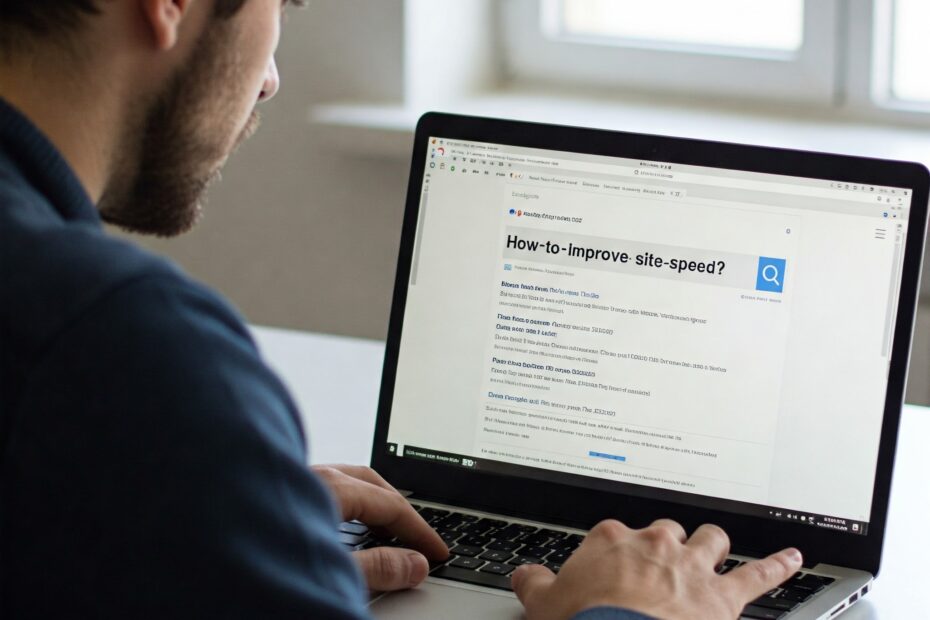Site speed is a crucial factor for user experience and search engine rankings. Faster-loading websites not only retain visitors better but also rank higher in search results. This guide will walk you through essential steps and strategies to improve your site speed effectively.
Why is Site Speed Important?
- Improves User Experience: Faster sites provide a better user experience, reducing bounce rates.
- Boosts SEO: Search engines like Google prioritize faster sites in their rankings.
- Increases Conversion Rates: Faster sites lead to higher conversion rates and better sales performance.
- Enhances Mobile Experience: Mobile users expect fast-loading sites, and speed is critical for mobile SEO.
Key Factors Affecting Site Speed
- Server Response Time: The time taken by the server to respond to a request.
- File Sizes: Large files, including images, videos, and CSS/JavaScript files, can slow down your site.
- Browser Caching: Storing static files in the browser cache reduces load times for returning visitors.
- Render-Blocking JavaScript: JavaScript that blocks the rendering of the page can slow down load times.
- Code Efficiency: Poorly written or excessive code can hinder performance.
How to Improve Site Speed : Steps to Improve Site Speed
1. Optimize Images
Images are often the largest files on a website, so optimizing them can significantly improve site speed.
- Compress Images: Use tools like TinyPNG or ImageOptim to reduce image file sizes without compromising quality.
- Use Correct Formats: Use appropriate image formats such as JPEG for photos and PNG for graphics with transparency.
- Implement Lazy Loading: Load images only when they are about to be viewed.
2. Minimize HTTP Requests
Reducing the number of HTTP requests can decrease load times.
- Combine Files: Merge CSS and JavaScript files to reduce the number of requests.
- Use CSS Sprites: Combine multiple images into a single sprite to reduce requests.
- Remove Unnecessary Plugins: Deactivate and delete plugins that are not essential.
3. Leverage Browser Caching
Browser caching stores static files in the user’s browser, reducing the need to reload them on subsequent visits.
- Set Cache Expiry Dates: Use cache-control headers to set expiry dates for different types of files.
- Enable Gzip Compression: Compress files before sending them to the browser to reduce load times.
4. Optimize CSS and JavaScript
Minimizing and optimizing CSS and JavaScript files can enhance site speed.
- Minify Code: Remove unnecessary characters, spaces, and comments from your CSS and JavaScript files using tools like UglifyJS and CSSNano.
- Defer JavaScript Loading: Load JavaScript files asynchronously to prevent them from blocking the rendering of the page.
- Eliminate Render-Blocking Resources: Ensure CSS and JavaScript do not block the rendering of the page’s content.
5. Use a Content Delivery Network (CDN)
A CDN distributes your content across multiple servers worldwide, reducing load times for users based on their geographic location.
- Choose a Reliable CDN: Use reputable CDNs like Cloudflare, Amazon CloudFront, or Akamai.
- Distribute Static Content: Store images, CSS, and JavaScript files on the CDN.
6. Enable HTTP/2
HTTP/2 allows browsers to load multiple files simultaneously over a single connection, improving load times.
- Check Server Compatibility: Ensure your server supports HTTP/2.
- Enable HTTP/2: Enable HTTP/2 through your hosting provider or server settings.
7. Reduce Server Response Time
A faster server response time improves overall site speed.
- Choose a Reliable Hosting Provider: Invest in a high-quality hosting service with good performance.
- Optimize Database Queries: Clean up and optimize your database to reduce server load.
- Use Caching Plugins: Implement caching plugins like W3 Total Cache or WP Super Cache to improve performance.
8. Implement Accelerated Mobile Pages (AMP)
AMP is a framework that creates fast-loading mobile pages.
- Use AMP for Blog Posts: Implement AMP for your blog posts to improve mobile load times.
- Follow AMP Guidelines: Ensure your AMP pages comply with AMP specifications for optimal performance.
Best Practices for Maintaining Site Speed
- Regularly Monitor Performance: Use tools like Google PageSpeed Insights, GTmetrix, and Pingdom to monitor and analyze your site’s speed.
- Keep Software Updated: Ensure your CMS, plugins, and themes are always up to date.
- Optimize Database Regularly: Perform regular database optimizations to remove unnecessary data.
- Limit Redirects: Minimize the use of redirects as they add extra HTTP requests.
Conclusion
Improving site speed is essential for better user experience, higher search engine rankings, and increased conversions. By optimizing images, minimizing HTTP requests, leveraging browser caching, and using a CDN, you can significantly enhance your site’s performance. Implement these strategies today to ensure your website loads quickly and efficiently, keeping your visitors engaged and satisfied.
For more tips on optimizing your website, explore our Website Speed Optimization Tools and other resources at WP Blogging Tips.

